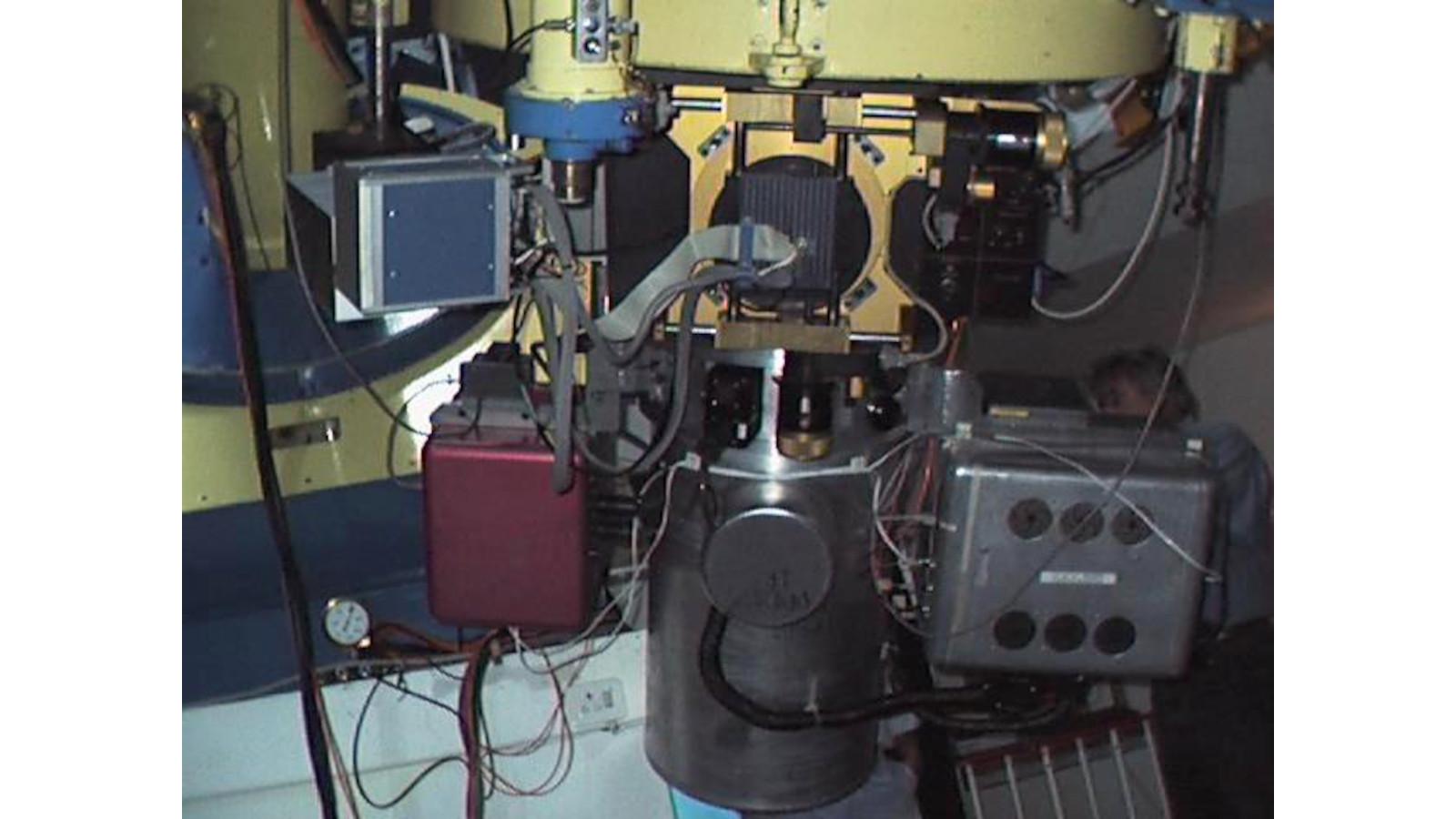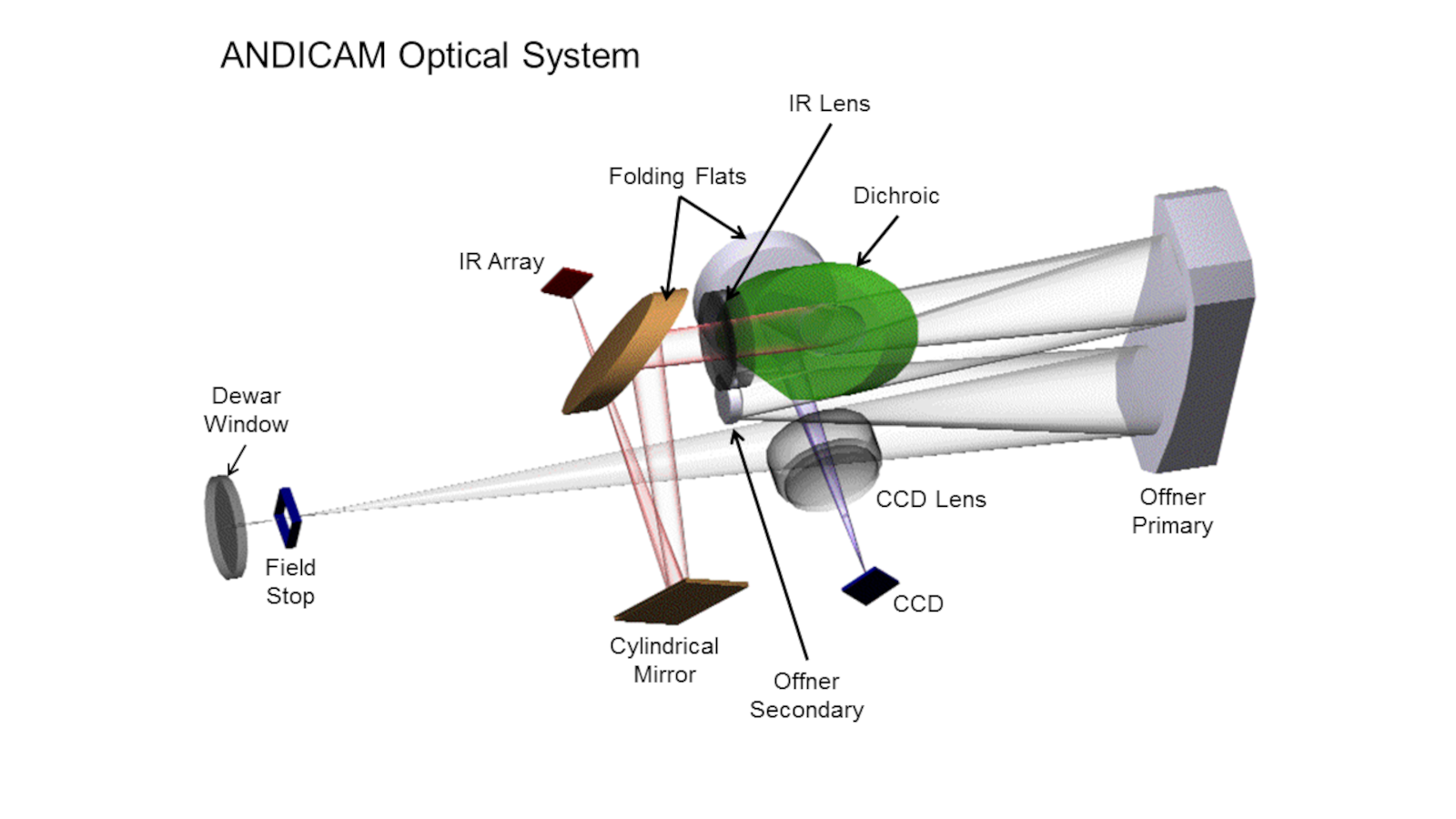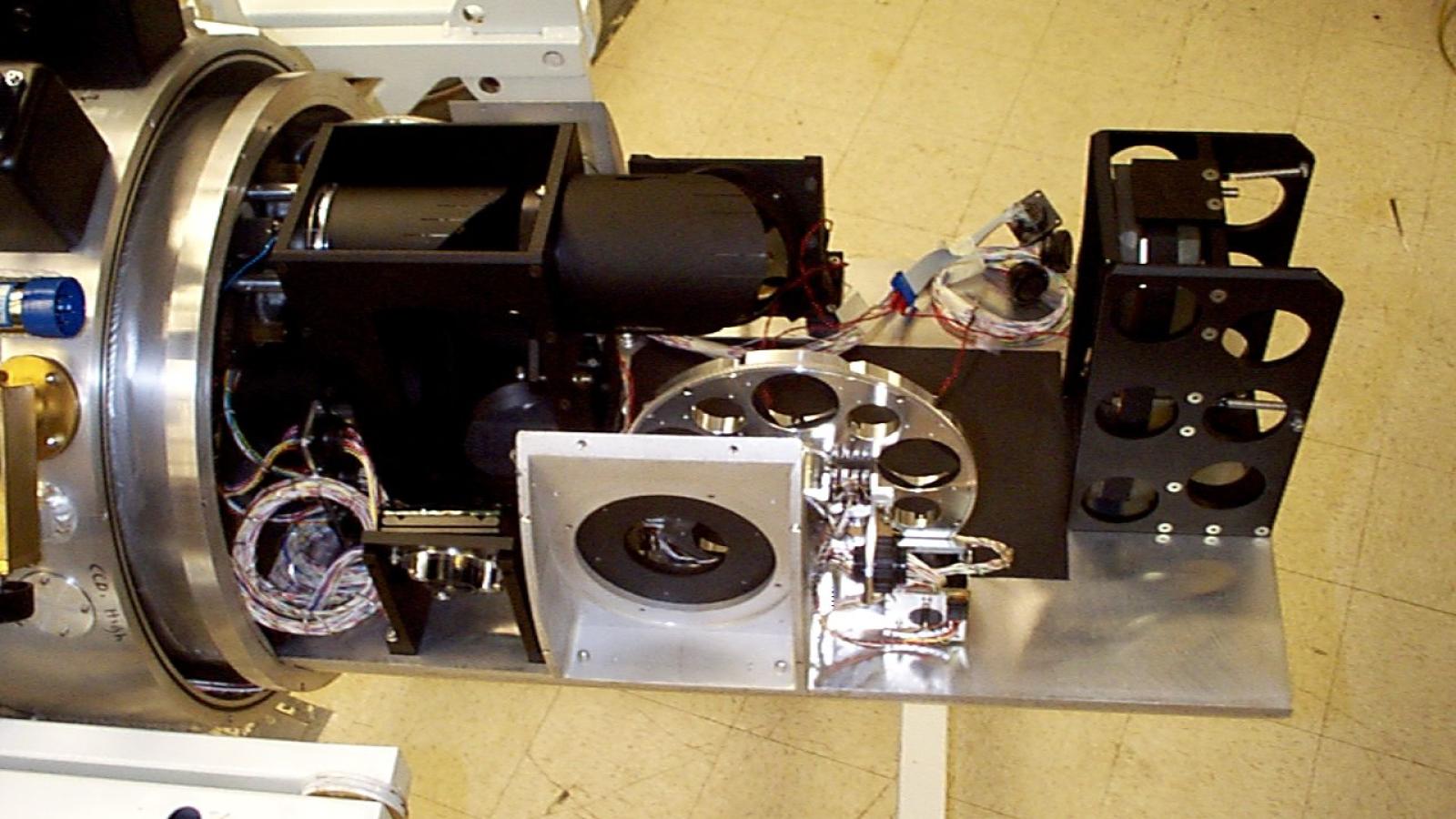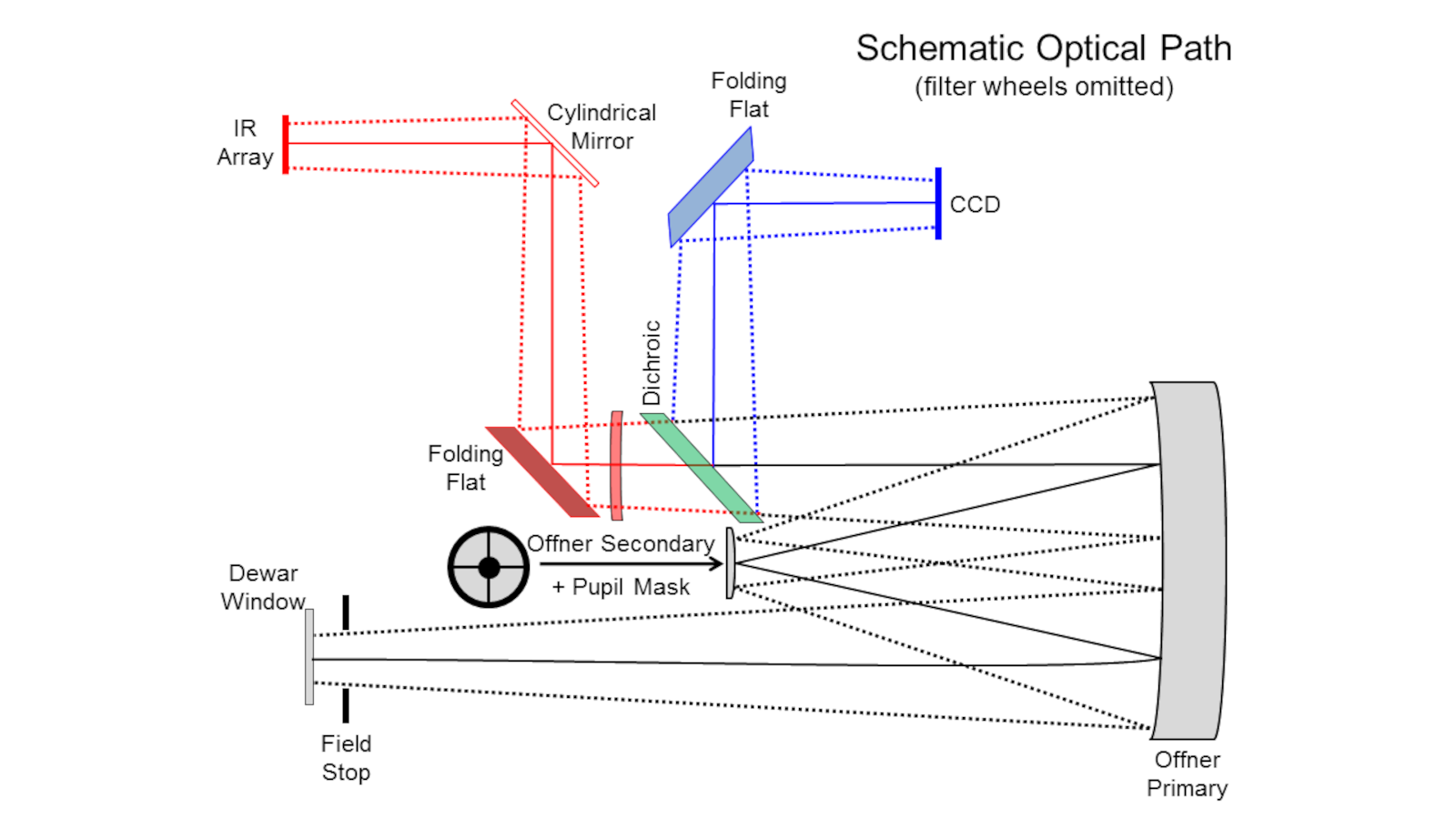Dutch ANDICAM (DANDICAM)
DANDICAM (Dutch ANDICAM) is a clone of the ANDICAM instrument that was built for the Dutch ASTRON agency to support gravitational microlensing follow-up observations by the original PLANET consortium. Like ANDICAM, DANDICAM can take simultaneous images at one optical (UBVRI) and one near-infrared (JHK) filter band. The optical design of DANDICAM is only a slight modification of the ANDICAM design to adapt it to the different optical prescription of the SAAO 1-m Elizabeth telescope.
DANDICAM was first deployed at SAAO in 1999 and operated until 2004 when PLANET operations at SAAO terminated.
Instrument Specification
- Project type: Facility Instrument - 2-channel CCD and IR imager
- Wavelength: 0.36 to 2.5 microns
- Imaging Filters: UBVRI, YJHK plus custom
- Field of View:
- Yale 1-m: CCD 10x10-arcmin, IR 3.3x3.3-arcmin
- CTIO 1.3m: CCD 6x6-arcmin, IR 2.4x2.4-arcmin
- Mode/Modes: simultaneous CCD+IR imaging, internal dithering for IR channel
- Primary science: photometric monitoring: microlensing, galactic, extragalactic, solar system
- Telescopes: CTIO Yale 1-m (1998-2002), CTIO SMARTS 1.3m (2003-2019)
- Years active: 1998-2019
- Reference: DePoy et al. 2003, SPIE, 4841, 827D
Instrument Facts
- ANDICAM operated for 21 years at CTIO acquiring >1million CCD and 2.7 million IR images
- Its first CCD a Lick/Loral 2Kx2K CCD, upgraded to Fairchild 477 2Kx2K CCD in 2003 when it moved to the CTIO 1.3m telescope.
- Its IR array was a Hawaii H1R 1Kx1K HgCdTe sensor.
- A twin instrument was built for the Dutch NSIRC and operated at the SAAO 1-m telescope as the "DANDICAM" from 1999-2005.
- ANDICAM and DANDICAM were pioneers in the development of gravitational microlensing for exoplanet discovery.
- Images of TNOs taken with the ANDICAM played a small role in the discovery of Eris and the "demotion" of Pluto in 2006.
- Some of the IR mechanisms in ANDICAM ran for >2.7 million cycles without failure or noticeable wear
- The primary science case was developed by OSU professor Andy Gould for microlensing exoplanet searches, and the acronym for its name is a play on our early code-name for the project: the "AndyCam".
Instrument Team
Darren DePoy (PI)
Andy Gould (Project scientist)
Richard Pogge (Instrument scientist)
Penny Sackett (ASTRON project scientist)
Paul Byard (Optical Designer)
Bruce Atwood (OSU detector lead)
Tom O'Brien (Mechanical Engineer)
Jerry Mason (Software Systems Developers/Engineer)
Daniel Pappalardo (Electrical Engineer)
Ralph Bellville (Design Engineer)
Ed Teiga (Electronics Technician)
Dave Brewer (Senior Instrument Maker)
Dave Steinbrecher (Senior Instrument Maker)





